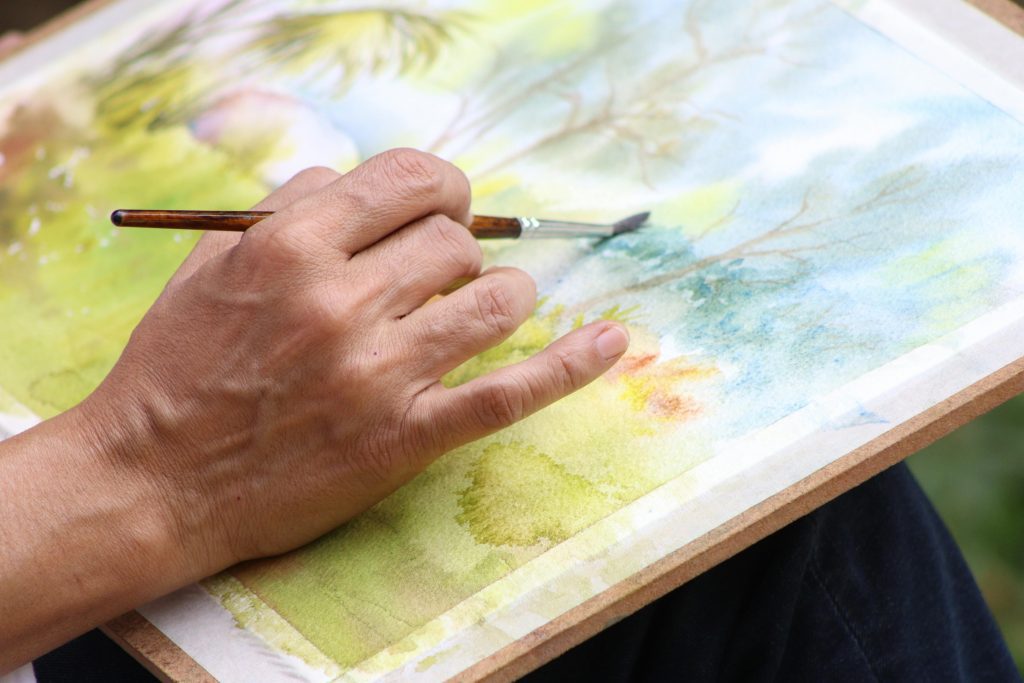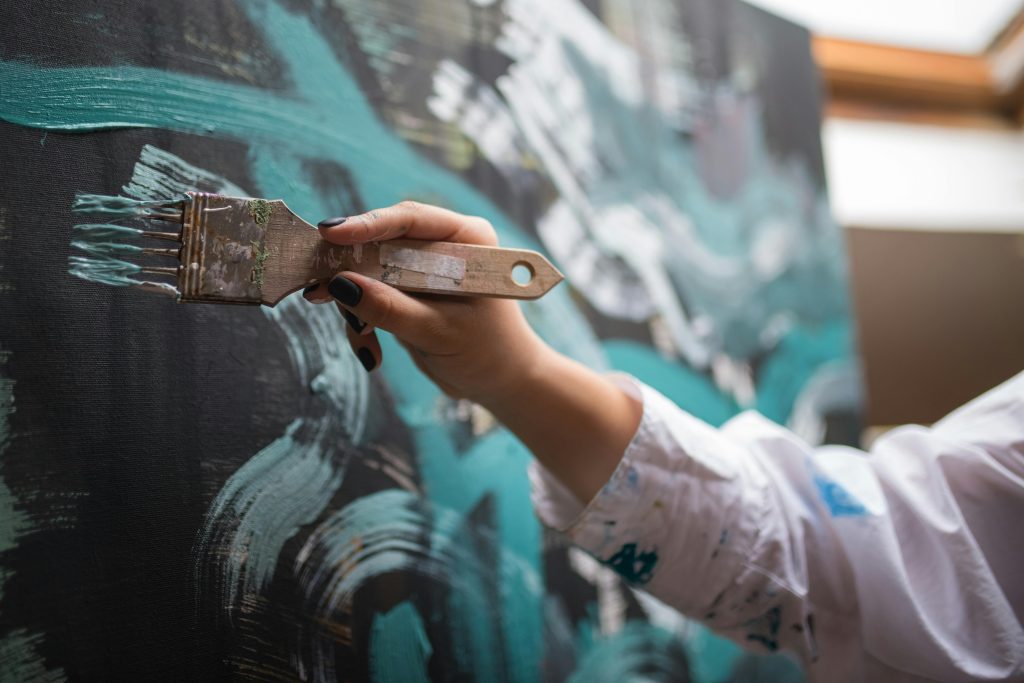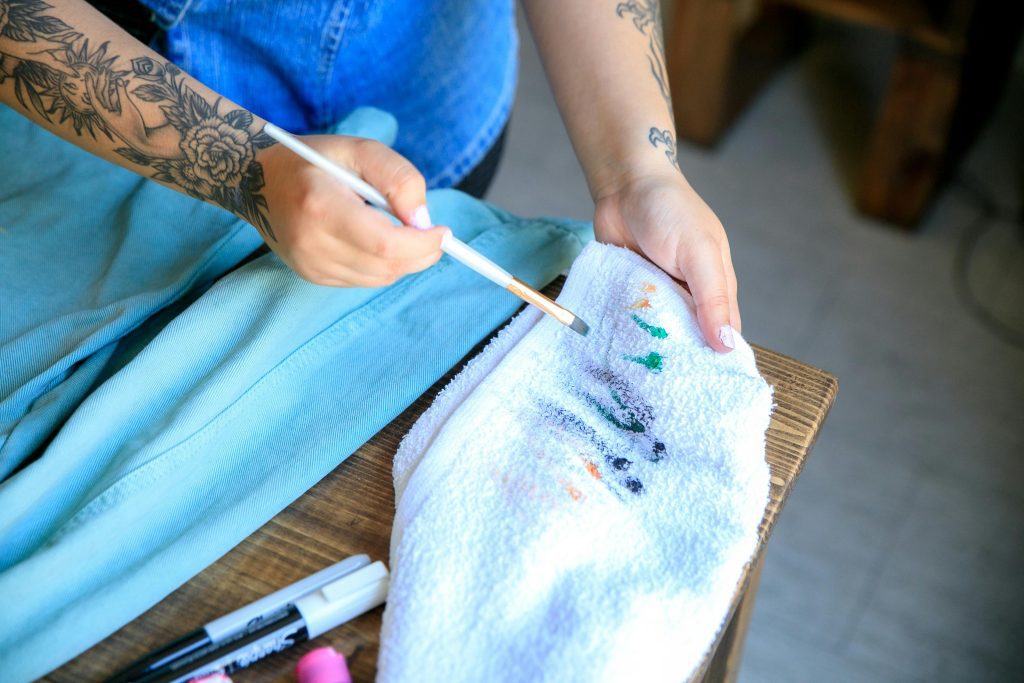Is Your Portfolio Speaking to the Right Audience?

Why Every Portfolio Isn’t for Everyone
Let’s start with a truth many artists overlook: your portfolio isn’t a one-size-fits-all situation. It’s tempting to create a single file with your favorite works and use it for every opportunity, but here’s the problem: what appeals to a gallery may not speak to a school admissions panel, and what collectors love might not be the same as what a curator is looking for. Different audiences have different needs, priorities, and expectations.
Understanding who will view your portfolio can drastically change how your work is received. If you want to be taken seriously by the right people, you need to do more than simply showcase your best work, you need to shape your narrative based on what matters to them. It’s not about changing your art to please others; it’s about curating intentionally. Think of it like dressing for the occasion, you’re still you, just presenting the version of yourself that best fits the moment.
Many artists feel uncomfortable about the idea of tailoring. They worry it might dilute their authenticity. But think of it instead as communicating more clearly. Would you use the same language talking to a child as you would a museum director? Probably not. The same logic applies to your portfolio. Adjusting tone, structure, and presentation can help your true self come through without confusion.
It’s also worth noting that professionalizing your portfolio based on audience signals maturity in your practice. It shows you’ve done your homework and that you understand the expectations of the people you’re trying to reach. That respect can go a long way.
So before you upload that same PDF everywhere, pause. Ask yourself: who is this for? What do they care about? What do they already know, and what do I want to show them that they don’t?
Getting Inside the Gallery Mindset
If galleries are your goal, then your portfolio should reflect professionalism, cohesion, and a sense of curatorial flow. Gallerists want to see how your work fits into their program and how it might look in a show. They are scanning for consistency of style, voice, and quality. One or two off-theme works can confuse or distract them from seeing your full potential.
To speak gallery language, lead with a body of work that is complete and recent. Include installation shots if you have them, they help gallerists imagine your pieces in their space. Keep your artist statement aligned with your portfolio, it should echo the themes and methods visible in the work.
Another key tip: galleries are often visual-first. That means crisp, high-quality images matter as much as the work itself. Poor documentation can make strong pieces look weak. Don’t let something as small as lighting or cropping hold you back.
Also consider layout. Galleries appreciate portfolios that flow smoothly and logically. Chronological order isn’t always best, try organizing by series or concept. It should feel like a walk through a tightly curated show.
And finally, be selective. More is not always better. A portfolio of 10 outstanding pieces can be far more impactful than 25 that are uneven. You’re not trying to overwhelm them, you’re showing them you’re ready.
Collectors Want to Feel Something
When it comes to collectors, you need to think beyond critique and curation. Collectors buy art because it moves them, inspires them, or speaks to their values. Your portfolio should evoke emotion and curiosity. Think of it as a conversation starter, not just a documentation of your practice.
It helps to include short captions or insights with each piece. Not long essays, just a line or two about what inspired the work or what story it tells. This helps potential buyers feel more connected. Remember, people don’t always buy the art alone, they buy the story behind it.
Include a range of scale and media if possible, especially if you have smaller or more affordable pieces. Collectors might be drawn to your larger works but want to start small. Give them options. Don’t hide your sketches or experiments if they hold value, they can be powerful entry points.
Consider also showcasing sold work, if appropriate. A “previously collected” label can signal demand and generate interest. Just make sure you differentiate it clearly from available works.
A good practice? End your portfolio with a call to action or contact note that invites inquiries. Make it easy to imagine a purchase, and to reach out.

Schools Want Process, Not Just Polish
School admissions committees are looking for potential, exploration, and commitment. While finished work is important, they are equally (if not more) interested in your process. That means your portfolio should show range and risk-taking, not just safe, refined pieces.
Include rough sketches, in-progress work, or projects that didn’t end as expected, but explain what you learned. Your growth is part of your art, and schools want to see that evolution. This is a rare case where showing “messy” or unresolved pieces can work in your favor.
Be sure to align your portfolio with your application materials. If you say you’re deeply interested in sculpture, and your portfolio has one sculpture among fifteen paintings, that sends a mixed message. Be intentional.
Highlight your curiosity. If you’ve tried different media, explored unusual themes, or experimented with digital tools, bring that in. Let your adaptability shine. Schools appreciate versatile minds.
You can also include brief project statements with each piece. These should explain your concept, process, and results. Clarity here is key, you’re showing them how you think and how you approach art as a learner.
Portfolio Versions Are a Must
Here’s a habit that will transform your professional life: create multiple versions of your portfolio. You don’t need to reinvent the wheel each time, but having separate files, or folders, tailored to different audiences can save you time and stress when opportunities come up.
You might start with one master portfolio that contains all your high-quality work. Then, pull from it to create variations: one for galleries, one for collectors, one for schools. Each version should emphasize the strengths and narratives most relevant to that audience.
Label them clearly. Use simple, professional filenames like “Portfolio_Gallery2025” or “Collector_PreviewSeries.” This shows you’re organized and thoughtful. If someone opens your file and sees exactly what they need, they’re far more likely to engage.
Having these versions ready also frees you up to apply to more opportunities without rushing. No more last-minute scrambling to remove or rearrange pieces.
Think of it as planting seeds in different gardens. Each one needs a slightly different kind of care, but the goal is growth all around.
The Role of Context in Curation
Context is everything. The same painting can look entirely different when placed next to different works. When curating for your audience, consider not just what’s included, but how the pieces relate to one another.
Try arranging your portfolio in multiple ways and see what stories emerge. Do the works speak to each other? Do they reinforce a theme or create a compelling contrast? Step back and look at the portfolio as a whole.
This is especially important when submitting for group shows or project proposals. Your work will likely be viewed alongside others, so curating for clarity and thematic cohesion is a huge advantage.
Don’t be afraid to remove a piece you love if it doesn’t serve the story. A strong, well-aligned narrative will always be more powerful than a scatter of disconnected highlights.
Use visual rhythm, color balance, and subject transitions to create a flow. Your portfolio should not feel like a box of puzzle pieces, it should feel like a full picture.
A Note on Formatting and Presentation
Let’s talk practicals. Your content is only half the story, presentation does the rest. Whether it’s a digital PDF, website, or print version, clean design matters. You want your layout to enhance the work, not distract from it.
Use consistent formatting for text and images. Avoid busy fonts or inconsistent sizing. Leave breathing room between pieces. Think like a designer, even if you’re not one.
Always lead with strong visuals. Start with a powerful piece to grab attention and close with another that leaves a lasting impression. It’s like writing a good story: your intro and ending matter.
If you’re submitting digitally, check file size and resolution. No one wants to wait five minutes for a PDF to load. If your portfolio is online, test it on both desktop and mobile.
Include titles, dimensions, media, and year. Don’t make the viewer guess. These small touches add up to a polished, professional impression.
When to Add Personality (and When Not To)
Adding personality to your portfolio can make you memorable, but there’s a balance to strike. A little flair, a well-placed quote, or an intro page with a friendly tone can go a long way. Just keep your audience in mind.
For collectors and schools, adding a bit of yourself can be engaging. A short “About Me” with a touch of humor or heart can help them connect. Even a curated “inspiration” page with images or text that shaped your work can be effective.
With galleries, lean professional. You can still infuse your statement with warmth, but keep the focus on your practice, your concepts, and your body of work.
Think of it this way: personality should invite curiosity, not confusion. You want to be remembered for your work, not overshadowed by design gimmicks or personal tangents.
Ask a friend or mentor to review for tone before you send. If your personality enhances your message, keep it. If it distracts, dial it back.
Making Space for New Work
It’s tempting to cling to old favorites, but your portfolio should be alive, not frozen in time. Regular updates keep it fresh and show ongoing growth.
Create a habit of revisiting your portfolio every few months. Add recent work, remove older pieces that no longer reflect your direction, and shift your narrative as you evolve.
This is especially key if you’re applying to residencies or grants that value experimentation. If you’re still showing only the work you made two years ago, you may be sending the wrong message.
New doesn’t mean perfect. Sometimes showing bold, new explorations can be more compelling than polished but outdated works.
Keep a folder or document where you note possible additions, so when the time comes, you’re not starting from scratch.
Use Feedback, Not Just Your Gut
We all love our own work, it’s natural. But your personal attachment shouldn’t be the only factor in deciding what goes into your portfolio. Getting feedback is essential.
Ask mentors, peers, or curators you trust to review your selections. Invite them to critique not just the work, but the overall structure. Does it tell a story? Does it feel balanced?
Try mock submissions. Ask a friend to review a portfolio as if they were a gallerist or school reviewer. It can be eye-opening to see what resonates.
You don’t have to take every suggestion, but listen with an open mind. Sometimes our favorite pieces don’t communicate what we think they do.
Outside perspectives can reveal blind spots, and also boost confidence where you might have been unsure.
: Tailor With Purpose, Not Pretense
Tailoring your portfolio is not about pretending to be someone else, it’s about translating your work in a way that resonates. Each audience you face is a new opportunity to refine how you communicate, without compromising who you are.
Don’t fear the process. Embrace it. The more you experiment with tailoring, the more fluent you become in your own language as an artist. Over time, you’ll have a toolkit ready for any opportunity, with confidence in your ability to connect.
And if you’re looking to build a more dynamic, audience-specific portfolio with ongoing feedback, consider joining the Women in Arts Network. It’s a great space to find guidance, get inspired, and learn what curators, collectors, and peers are really looking for.
Your art deserves to be seen, and understood. Tailoring your portfolio is how you open that door.
The Silent Power of Presentation: What Your Layout Says About You
Your portfolio layout might seem like a minor design choice, but it’s one of the first things decision-makers notice. Are your works cluttered or spaced elegantly? Do you use clean fonts, smart headings, and clear navigation? Presentation subconsciously communicates professionalism, taste, and how seriously you take your craft. For galleries, this becomes especially vital. Curators are constantly reviewing portfolios, and a well-laid-out one instantly gives them confidence in your overall practice.
Think about it: your artwork may speak volumes, but if it’s buried in a chaotic or confusing file, its message might never land. A school portfolio, for example, benefits from a layout that showcases growth and experimentation, often chronologically or thematically. For collectors, visual clarity helps them imagine the works in real life, your layout should make their viewing experience seamless and enjoyable.
This is also where your audience research pays off. Some audiences prefer a minimal, white-space aesthetic while others appreciate a richer context. Academic programs often prefer written artist statements beside works. Galleries may prefer brevity with a downloadable CV and fewer distractions. Knowing this in advance lets you structure your portfolio for visual and narrative impact.
Another subtle but important tip is keeping your tone and language consistent throughout. If your portfolio includes introductions, descriptions, or essays, they should feel cohesive and well-edited. This kind of polish makes all the difference, especially when your audience is used to reviewing dozens of portfolios at a time.
Don’t underestimate the impact of accessibility, too. Your portfolio should be easy to view on mobile and desktop. Whether it’s a PDF, website, or physical booklet, accessibility ensures your effort reaches as many eyes as possible. Include easy navigation, working links, and clear filenames, small tweaks that give your audience the best chance to truly see your work.
And here’s the thing, presentation is not about dressing up your art in something it’s not. It’s about giving it the clarity and breathing room it needs to shine. When you take care of how your work is seen, you’re also showing that you care about the people seeing it.

10. When One Size Doesn’t Fit All: Creating Multiple Versions of Your Portfolio
In an ideal world, you’d make one perfect portfolio and send it out to everyone. But the reality is, each opportunity comes with its own expectations. That’s why creating multiple versions of your portfolio isn’t overkill, it’s smart strategy. Think of it like tailoring your outfit to match the event. You wouldn’t wear the same thing to a gallery opening and a graduate school interview, right?
For galleries, your portfolio should highlight cohesive bodies of work that demonstrate artistic maturity and a unique point of view. A series that tells a visual story or presents a strong conceptual thread works well. On the other hand, academic institutions might look for potential, exploration, and diversity of skills, so showcasing different media, styles, or even early experiments is encouraged.
Collectors often want a portfolio that feels like a curated experience. Including pricing, artwork dimensions, or available works can make their decision easier. Here, consider a clean digital presentation with downloadable PDF options. You may even want to include testimonials, press mentions, or a link to past sales if applicable.
Having multiple versions doesn’t mean duplicating your efforts every time. You can create a master folder with labeled subfolders, then pull elements as needed to build each version. Keep a gallery-ready version, a school-focused one, and one tailored for direct sales. Adjust images, reorder projects, rewrite a few paragraphs, and you’re good to go.
This also means staying organized. Use a naming system that makes sense to you, like “Gallery_Portfolio_2025,” or “Collector_Sample_March.” It helps when you’re applying to multiple calls and want to avoid sending the wrong version. Trust me, few things are more awkward than sending a school application that’s filled with pricing sheets meant for collectors.
Finally, remember that creating these versions isn’t about changing who you are as an artist. It’s about meeting your audience halfway and giving them what they need to say “yes.” The core of your work remains the same, it’s just being presented in the language your audience speaks.
11. Evolve and Adapt: Your Portfolio Is a Living Thing
If your portfolio looks the same as it did last year, it might be time for a refresh. Art is an evolving journey, and your portfolio should reflect that growth. A static portfolio suggests a static practice, which is rarely the case for any active artist. This is especially true if you’re pursuing multiple opportunities, your audience wants to see that you’re still creating, exploring, and taking risks.
Set a reminder every quarter to revisit your portfolio. What new work can you add? What older pieces no longer represent your direction? This kind of regular maintenance not only keeps your materials fresh but also helps you reflect on your evolving style and values. It’s a great opportunity to see patterns in your work that you may not have noticed while creating.
For schools, adding recent work shows continued practice and development, important for admissions committees seeking commitment. For galleries, it demonstrates consistency and seriousness about your career. Collectors are more likely to connect with work that feels alive and timely. Nobody wants to feel like they’re buying into a past chapter.
Don’t forget to update your CV, bio, and artist statements alongside your work. They need to grow with you. If you’ve recently had a group show, received a grant, or launched a new project, let it shine. These updates aren’t bragging, they’re proof of progress, and they matter deeply to your audience.
You can even go a step further and ask for feedback once in a while. Reach out to mentors, peers, or even curators you trust. A fresh pair of eyes can spot what you’ve grown blind to. Is something no longer serving your current direction? Are there works missing that tell a crucial part of your story?
Treat your portfolio like a garden: weed it, water it, and let it grow. When it’s nurtured with care and intention, it becomes more than a file, it becomes a living map of your creative journey, and that’s what truly resonates.
